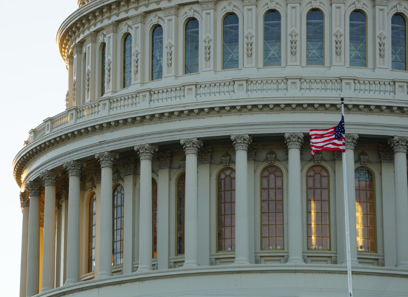M&A Outlook: How Economic Shifts Will Define the Future of Global Mergers and Acquisitions
M&A Outlook: How Economic Shifts Will Define the Future of Global Mergers and Acquisitions
Blog Article
The Impact of Mergers and Acquisitions on Market Dynamics and Competition
The landscape of procurements and mergers provides an intricate interplay between cultivating growth and possibly threatening competitive stability within markets. As firms pursue calculated alignments to enhance performance and innovation, the ramifications on customer selection and market pricing warrant cautious examination. While the advantages of such debt consolidations can be evident, the darker ramifications usually emerge, raising important inquiries about market power and the regulatory frameworks created to keep balance. This conversation welcomes an expedition of the subtleties involved, revealing exactly how these business maneuvers improve the extremely foundations of competition.
Review of Mergers and Acquisitions
Mergers and procurements (M&A) play a crucial duty fit the landscape of contemporary service, as business seek to enhance their one-upmanship and attain calculated goals. M&A transactions involve the combination of companies or possessions via numerous monetary deals, including mergings, where 2 firms combine to create a brand-new entity, and purchases, where one company acquisitions an additional outright. These activities are driven by a myriad of factors, such as the search of harmonies, diversification of item offerings, and the wish to enter new markets.
The M&A process typically entails numerous stages, including critical planning, due diligence, settlement, and integration (Emerging Market Opportunities). Firms perform detailed analyses to identify prospective targets that align with their development approaches and examine the financial and functional implications of a purchase. Regulatory factors to consider likewise play a crucial function, as antitrust laws are created to avoid monopolistic techniques that could damage competition
As organizations browse the complexities of M&A, the results can significantly affect stakeholders, consisting of workers, investors, and customers. Understanding the dynamics of M&A is crucial for reviewing their effects within the broader context of market habits and affordable placing.
Favorable Results on Market Characteristics
The debt consolidation of business through mergers and procurements can lead to significant positive effects on market characteristics. This performance can equate into reduced costs for consumers, fostering an extra competitive market environment.

Furthermore, increased market share arising from mergings can give companies with better negotiating power with suppliers and providers, assisting in enhanced terms and conditions that can benefit the general supply chain.
Negative Consequences for Competitors

In addition, the removal of rivals via acquisitions can suppress innovation. When principals merge, smaller sized firms may struggle to compete, resulting in a homogenization of solutions and items. The resultant absence of competitors can produce a setting where continuing to be firms have much less reward to invest in r & d.
Furthermore, mergers can develop obstacles to entrance for new firms, as the merged entity may take advantage of its enhanced resources to control the marketplace. This can discourage potential participants, therefore limiting competitors and innovation in the lengthy term.
Inevitably, while mergers and acquisitions can provide strategic benefits, their prospective to undermine competitors requires cautious consideration of their broader effects on the market characteristics. The equilibrium between development and competitive honesty stays a crucial concern in evaluating such company techniques.
Regulatory Factors To Consider and Oversight
Regulatory structures play an essential duty fit the landscape of mergers and purchases, ensuring that market characteristics stay affordable and fair. These structures are designed to stop anti-competitive behavior and to secure customer rate of interests. Governing bodies, such as the Federal Trade Payment (FTC) in the United States and the European Compensation in the EU, evaluate suggested purchases and mergings based on their prospective influence on competition within the market.
The analysis process involves a thorough investigation of the market share, possibility for monopolistic methods, and the total financial implications of the deal. Regulatory authorities frequently impose problems or call for divestitures to mitigate issues over minimized competitors, ensuring that the joined entity does not dominate the market unjustly.
This collaborative approach aids to cultivate a well balanced regulative atmosphere that promotes innovation while guarding affordable methods. Ultimately, effective governing factors to consider are necessary in preserving market integrity and motivating healthy and balanced competition in the face of evolving organization landscapes.
Study and Real-World Examples
Regularly, situation studies of remarkable mergings and acquisitions highlight the extensive effects these purchases can have on market dynamics. The 2000 merging between AOL and Time Detector works as a prime instance, where the expected harmonies fell short, leading to a radical decline in investor value. This instance highlights just Check Out Your URL how cultural imbalances and overestimation of market capacity can disrupt competition.
On the other hand, the acquisition of WhatsApp by Facebook in 2014 exemplifies an effective integration that reshaped the interaction landscape. Emerging Market Opportunities. Facebook leveraged WhatsApp's individual base to boost its service offerings, successfully enhancing its market prominence while maintaining competition in the messaging field
An additional significant situation is the merging of Exxon and Mobil in 1999, which created one of the world's largest oil firms. This combination brought about greater effectiveness go to the website yet elevated concerns regarding reduced competitors in the energy market, triggering regulative scrutiny.
These instances highlight the intricate interaction between mergers and acquisitions and market characteristics, showcasing both the possible advantages and challenges that can emerge, ultimately shaping competitive landscapes throughout sectors.
Verdict
Mergers and acquisitions play a pivotal role fit market dynamics and competition. While they can result in enhanced effectiveness and development, they likewise position risks such as reduced competition and greater customer costs. Efficient regulatory oversight is vital to make sure that the benefits of M&An activities are made the most of while reducing negative effect on market competitors. A balanced approach can aid maintain consumer welfare and cultivate an affordable landscape that urges both development and advancement.
One major worry is the potential for lowered market competition, as mergings commonly lead to the combination of market power amongst fewer gamers. Regulatory bodies, such as the Federal Profession Compensation (FTC) in the United States and the European Compensation in the EU, review suggested procurements and mergers based on their prospective impact on competition within the market.

Mergers and acquisitions play a crucial function in shaping market dynamics and competitors. Efficient regulatory oversight is necessary to make sure that the benefits of M&A tasks are optimized while reducing negative influences on market competition.
Report this page